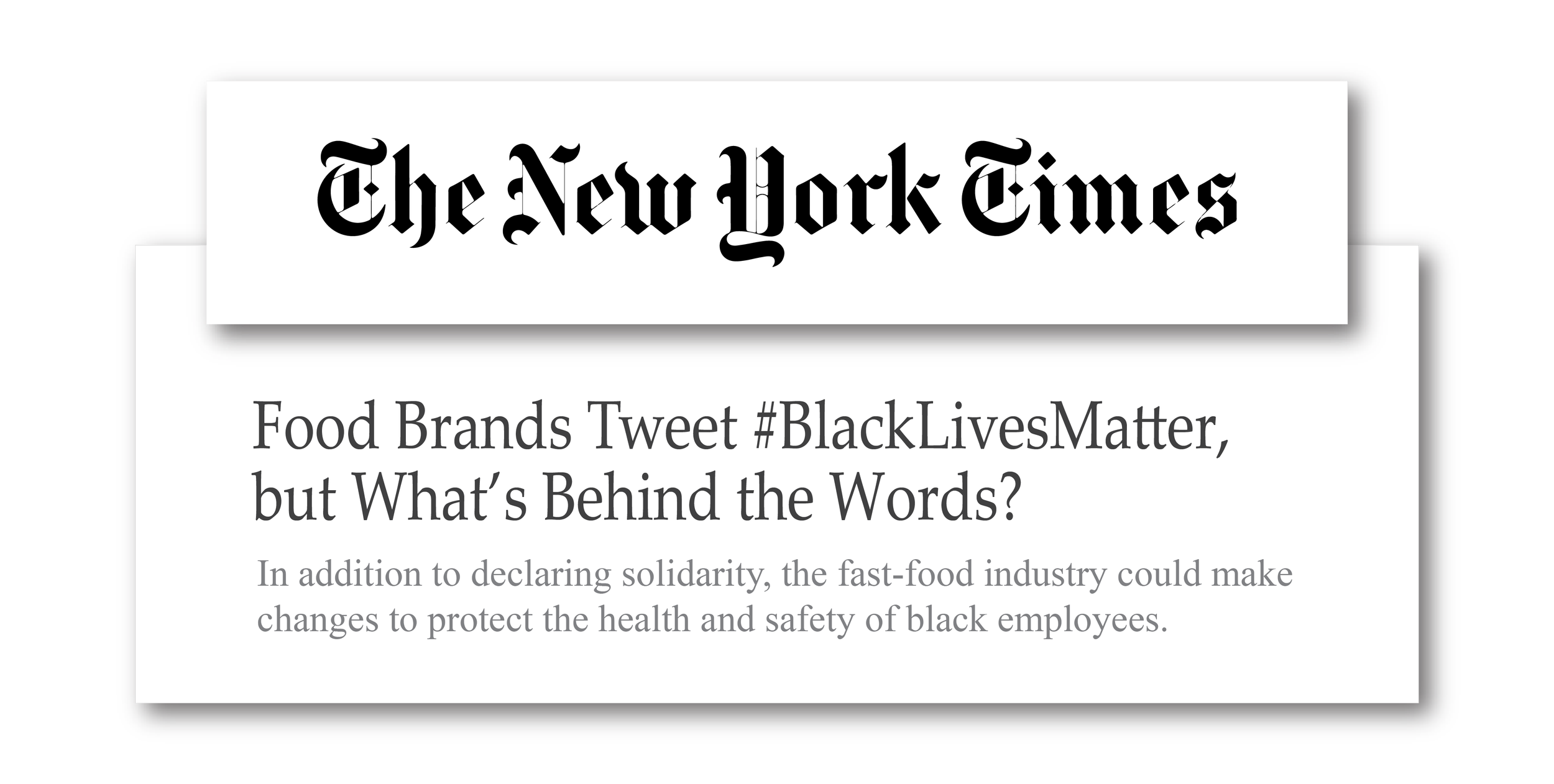
Executive Guide to Navigating Our Complex Political, Social and Economic Environment
Today’s Complex Business Environment
Modern business leaders are navigating a complex, rapidly changing environment. With hundreds of intertwined economic, social and political issues and thousands of perspectives on “what’s right,” it’s increasingly hard for executives to know how to operate and communicate. Just look at the recent headlines below showing how businesses are expected to meet financial goals and stakeholder needs. Additionally, CEOs are expected to address everything from the pandemic to reproductive health to democracy protection and more.








How Did We Get Here? The History of Shareholder vs. Stakeholder Primacy
Historically, most US businesses considered the needs of various corporate stakeholders, including employees, customers, suppliers, and the public. In fact, in 1960, HP co-founder David Packard said, "I want to discuss why a company exists in the first place. In other words, why are we here? I think many people assume, wrongly, that a company exists simply to make money. While this is an important result of a company's existence, we have to go deeper and find the real reasons for our being."
In the 1970s, economist Milton Friedman argued that Packard was wrong. Milton believed corporate executives are only beholden to shareholders. This conviction caused many in the C-suite, especially at publicly traded entities, to focus on meeting financial goals and appealing to investors.
Milton Friedman, Nobel-Prize Winning Economist
“An entity’s greatest responsibility lies in the satisfaction of the shareholders.”
In recent years, the notion that companies have a “broader purpose” and must deliver equal value to all stakeholders has regained momentum. Through the Business Roundtable, CEOs of the largest US corporations overturned the decades-old policy that defined a corporation’s principal purpose as maximizing shareholder return. In its place, the Roundtable adopted a new “Statement on the Purpose of a Corporation.” It declared companies should serve not only their shareholders, but also “deliver value to their customers, invest in employees, deal fairly with suppliers, and support the communities in which they operate.”
Environmental, Social, and Governance
This milestone brought the notion of ESG, or environmental, social, and governance, to the forefront. ESG requires companies to pay closer attention to their impact on the “triple bottom line,” or planet, people, and prosperity. This buzz-worthy acronym is broken out into three important categories:
Environmental: Your organization’s impact on physical surroundings, including climate, air quality, water, waste, etc.
Social: Is your company’s relationship with key stakeholders, including the following:
Employees: labor practices; health and safety; DEI
Customers: products, services, and support
Suppliers / Partners: supply chain management
Community: contributions, philanthropy, engagement
Governance: The rules, practices, processes, policies, disclosures of your organization. Governance also includes things like business ethics, corporate leadership, data security, internal controls, and capital allocation.
The concept of ESG isn’t new. It has been called several things over the years, including “corporate social responsibility,” “corporate engagement,” and more. With each of these terms, experts create iterations of the notion and add details, but the fundamental core remains the same. At IGC, we call the overarching bucket “corporate social impact.”
IGC Key Term: Corporate Social Impact
Business-led education, enablement, and action
internally and externally
through people-centric purpose, policies, programs, products, partnerships, political influence, and philanthropic efforts
that measurably improves outcomes for corporate stakeholders, community members, and the planet
Stakeholder Capitalism
The shift in corporate focus to go beyond pure financial growth and meet the needs of a wider audience is growing in popularity. Oxford Economist Kate Raworth argues in Doughnut Economics that traditional models, which focus on GDP, income and output as the measure of a healthy economy, fail to consider the broader global context in which economies exist and the people they serve. Raworth encourages a shift to human-centered metrics such as prosperity, happiness, and environmental health.
A people and planet-first approach is the foundational element of stakeholder capitalism, a corporate strategy in which long-term success requires companies to maximize shareholder value and measurably improve outcomes for key stakeholder groups, including employees, customers, and partners. More than just being ethically just, companies that prescribe to this model deem it essential to the value creation of the business. They argue that long-term success can’t rely purely on enhancing shareholder value. Instead, companies must maximize results for all stakeholder groups, including employees, suppliers, partners, customers, government, the public and the planet.
BlackRock CEO Larry Fink in his 2022 Letter to CEOs
“Stakeholder capitalism is not about politics. It is not a social or ideological agenda. It is not ‘woke.’ It is capitalism, driven by mutually beneficial relationships between you and the employees, customers, suppliers, and communities your company relies on to prosper. This is the power of capitalism.”
Trust: The Ultimate Currency in Stakeholder Relationships
In part, the increased expectation that businesses should address societal issues is because the business continues to be the most trusted institution type worldwide, according to the 2023 Edelman Trust Barometer. Leading communications agency Edelman has performed this study for more than 20 years and believes “trust is the ultimate currency in the relationship that all institutions—business, governments, NGOs and media—build with their stakeholders.”
Trust in US Businesses is High
Respondents were asked to indicate, on a 9-point scale, “how much do you trust the institution to do what is right?” Since last year's survey, trust in businesses gained six points in the U.S.
Businesses are the sole institution now seen as both competent and ethical. Businesses hold a 54-point lead over government in competence — and 30 points in ethics.
The Spotlight is on CEOs
CEOs are expected to take a public stand and take business action on key issues, with 85% expected to play a role in strengthening our social fabric.
CEOs are expected to use resources to hold divisive forces accountable.
Businesses are a Credible Source of Information
During the pandemic, employers became a trusted source for health-related communications, especially through company newsletters. Since then, Edelman asked about the relative credibility of employer communications across a wide variety of topics and found it is the most believable source — no matter the subject.
Stakeholders Expect Businesses to Act on Societal Issues
Societal leadership is now a core function of a business
72 percent want businesses to defend facts and expose questionable science being used to justify bad social policy
64 percent want companies to support politicians and media outlets that build consensus and cooperation
Businesses must work with all institutions to foster innovation and drive impact
Sources
https://www.axios.com/2023/01/16/edelman-trust-employers-government-survey
https://www.edelman.com/trust/2022-trust-barometer
https://ontic.co/wp-content/uploads/2021/07/2021-Mid-Year-Outlook-State-of-Protective-Intelligence-Report.pdf
Edelman Trust Survey 2023 and the Wall Street Journal
In the U.S., roughly 25% to 35% of self-identified Republicans said they wanted business to act more aggressively on various pressing issues. The results cut against a common narrative that Republicans widely consider too many business leaders excessively “woke” and prone to harmful activism.
It’s important to understand the current perspectives and trends of the various corporate stakeholders. Below you will find deep dives on each of the following stakeholder groups: investors, employees, customers, partners, community members, and policymakers.
Investors
For the last several years, major financial investors have pushed corporate leaders to support or oppose a variety of social, political and environmental issues.
“If politicians won’t lead, then the burden falls on business leaders, who are uniquely qualified because of their problem-solving skills,” said Seth Klarman, the legendary founder and CEO of the Boston-based private investment company Baupost Group.
Institutional investors aren’t just encouraging corporate executives to act, they are making financial decisions based on the company’s willingness and aptitude to do so.
“A company’s ability to manage environmental, social and governance matters demonstrates the leadership and good governance that is so essential to sustainable growth,” noted BlackRock CEO Larry Fink. BlackRock, a prominent player in index funds, now places greater emphasis on ESG when making investment decisions.
Fink’s organization is not alone. PR leader Edelman surveyed 700 institutional investors in seven markets and found the following trends:
92 percent of institutional investors believe “a company with strong ESG performance deserves a premium valuation to its share price.”
88 percent of institutional investors now subject ESG to the same scrutiny as financial considerations when evaluating companies.
90 percent believe companies that “prioritize ESG integration represent better opportunities for long-term returns than those who do not.”
Many public companies have shifted investor relations strategies to appease these types of stakeholders. Not just because it’s “right,” but also because there is a lot of money at stake. Managed, global sustainable investment funds rose from $5 billion in 2018 to nearly $70 billion in 2021, according to the Global Sustainable Investment Review.
Managed, Global Sustainable Investment Funds
This investment strategy has paid off, literally. Midway through 2022, global sustainable assets are about $2.5 trillion. This represents a 13.3 percent fall from the end of Q1 2022 but is less than the 14.6 percent decline over the same period for the broader market.
Also, for five years, NASDAQ compared the results of companies considered “sustainability leaders” by the popular MSCI framework and found they exhibited both higher returns and less risk than the “sustainability laggards.” While this outperformance is a positive correlation and not causative, it’s still an important trend to monitor.
Since companies operationalizing and reporting on ESG may access more capital to fuel long-term performance, ESG reporting is becoming standard for many organizations. More than 90 percent of the S&P 500 and around 70 percent of Russell 1000 publish ESG reports, according to the G&A Institute. The US Securities and Exchange Commission (SEC) is considering new rules that would regulate facets of this ESG reporting, including more detailed disclosure of climate-related risks and greenhouse-gas emissions. These changes signify the largest push in the last 20 years for consistent, transparent ESG standards.
Key Lesson
Investors are paying attention to corporate social impact efforts. Your company should closely monitor and develop strategic plans for adhering to new legal and financial regulations as well as mainstream investment trends.
Controversy at CoverGirl
With transparency comes accountability. The market is already holding companies responsible for ESG claims. Eighty-seven percent of investors anticipate companies that do not deliver on their ESG promises will face an increased risk of litigation.
Coty, the parent company of the popular makeup brand CoverGirl, recently discovered this the hard way and is now in a legal battle with the nonprofit Toxin Free USA.
"CoverGirl represents itself as being a champion of 'open, inclusive and sustainable beauty,'" said Diana Reeves, executive director of Toxin Free USA. "Coty, CoverGirl's parent corporation, publishes a sustainability report that touts its environmental initiatives along with its 'Product Safety' strategy. Toxin Free USA believes that consumers are being misled as products containing toxic PFAS chemicals are neither sustainable nor safe."
Employees & Recruits
From the job application process to the retirement party, modern companies focus on employee experience. This effort is more than an HR program. Organizations that prioritize and intentionally build a meaningful corporate culture, including a solid relationship with employees, see greater success in several important measures – including less turnover, increased productivity, and a better bottom line.
Decades ago, executives believed a company’s culture was built through happy hours and team-building exercises from hell. Now, smart businesses realize employees care about more than getting free snacks. In fact, 95 percent of employees surveyed by Gallup said culture is more important than compensation.
So, which factors go into culture? The top predictors of workplace satisfaction are the values of the organization, closely followed by the quality of the senior leadership and career opportunities, according to the Harvard Business Review article, “What Matters More to Your Workforce than Money.”
Andrew Chamberlain, senior director of product for machine learning at Glassdoor
“Although money isn’t a major driver of employee satisfaction, a person’s workplace priorities do change as their income rises. For example, the culture and values of the organization explain about 21.6% of worker satisfaction in the lowest income group, but that rises to 23.4% for the highest incomes. This suggests that higher earners want their employers to share their values and create a positive company image.”
Today’s workforce expects business leaders to have a strong, loud voice. Employees want CEOs to publicly discuss everything from macro-issues like pandemics or natural disasters to specific concerns raised by employee resource groups or unions like equal pay and diversity.
Sixty percent of workers globally agree with this statement: “When considering a job, I expect the CEO to speak publicly about controversial social and political issues that I care about,” according to respondents of the 2022 Edelman Trust Barometer. Additionally, Gartner discovered 68 percent of employees would consider leaving their employer for an organization that takes a stronger stand on cultural issues.
Employees also expect your company to truly demonstrate the values displayed on the “About Us” page of your corporate website. For example, if your external communications state your organization cares about diversity, equity and inclusion, but your employees disagree or your workforce metrics don’t align, this is a huge risk. But you can turn this into an opportunity. Aligning your employee journey and corporate values can be a strategic differentiator in competitive hiring and retention markets.
At IGC, we believe a key component of this effort is making employees part of the corporate social impact process. From executive meetings with ERG leaders to creating internal committees to offering incentivizes for meeting ESG goals, you must give employees a role to play. A recent study found that 29 percent of companies now include various ESG metrics in their incentive plans, up from 22 percent a year ago, according to Robin Nuttall, a leader in McKinsey’s ESG and regulatory strategy work.
Key Lesson
Employees are a critical component of stakeholder capitalism, and your company must be able to prove to them through qualitative and quantitative means that the “social” component of your ESG efforts is authentic.
What is an ERG?
In the 1960s, black workers at Xerox created the first-known, voluntary, self-organized group in the United States to mitigate race-based tension at work. This collective became known as an “employee resource group,” or ERG.
Now, ERGs are increasingly relevant as gender, ethnicity, race, etc. are all part of the regular corporate dialogue. Effective employee groups have both executive support and employee participation from members of that specific community or allies. When united, these groups can collaborate and strategically try to influence policies. For example, PRIDE ERGs from Dell, IBM, Silicon Labs, Salesforce, and more unite and visit the Texas state capitol during every legislative session to advocate for the LGBTQ+ community.
ERGs are found in 90% of Fortune 500 companies, according to TopMBA, and many Great Place To Work Certified organizations have ERGs.
Customers
Customers encourage, and sometimes demand, that organizations take a stance on a wide range of political and social issues. For many companies, especially consumer brands, the list of topics to voice an opinion on grows daily. Here are just some of the categories:
Environmental: climate change, energy, and nature preservation
Economic: employee diversity, job creation, poverty, and workforce development
Human rights: LGBTQ+ equality, women’s healthcare, racial equity, immigration, and gun control
Political: voting, elections and specific bills
A direct connection exists between acting (or not acting) on these topics and customer loyalty. Myriad data exists that prove why this is an important focus for your business:
87 percent of consumers will purchase a product because a company stood behind an issue
72 percent are more likely to forgive a company that takes a stand if it makes a mistake
Brand advocacy is especially important for younger purchasers.
90 percent of millennials would switch brands to one associated with a cause
94 percent of Gen-Z think companies should address social and environmental issues
This trend goes beyond typical business-to-consumer (B2C) brands. Increasingly, business-to-business (B2B) organizations must include detailed information on sustainability, human rights, and other areas of corporate social impact in major requests-for-proposals (RFPs). And this effort must come from the top. Edelman’s Expectations for CEOs report reveals that 76 percent of people globally agree that CEOs should take the lead on change rather than waiting for the government to impose it — an 11-point increase from their previous study.
Yet picking an issue and executing communications effectively isn’t always easy. In fact, it can often have terrifying consequences. Threats—physical as well as digital—to CEOs, their employees, and their businesses in the US have grown exponentially over the past few years, fueled by a combination of a deeply polarized society and divisive policies. The 2023 Edelman Trust Barometer found that 58 percent of CEO received physical threats after taking a position on a racial and/or political issue, while 40% received physical threats because they had not taken a position. Executives also face threats on sites such as Twitter of doxing—the publishing of someone’s personal information with the goal of motivating other people to contact the individual and harass him or her.
It is important for your company to have a defendable position on why you decide to act or refrain from specific political, social or governmental issues. You must also be able to clearly communicate your rationale for getting involved/not getting involved with your customers.
Key Lesson
To seize opportunities and reduce risk, you must define a clear social impact strategy, create a prioritized action plan, and ensure transparent communication with your customers.
Partners & Suppliers
Pictures of shipping containers backed up at ports, memes of empty shelves in supermarkets, and media headlines showcasing shortages on everything from coffee to cars is commonplace due to the pandemic. But the world health crisis isn’t the only challenge plaguing supply chain leaders. Companies now face the added pressure to ensure they are working with ethical, environmentally-conscience partners.
Nowadays, partners are one of the most complex stakeholders in corporate ESG strategy. Historically, supply chain experts and business development leaders focused on finding low-cost, high-quality collaborators. Now, for two organizations to work together, sustainability and corporate values are also part of the evaluation and ongoing relationship.
Not only is your business expected to meet the needs of your direct stakeholders, but you must also hold your partners and suppliers accountable. Many organizations demand high standards of business integrity, environmental responsibility, and respect for human rights from all partners. Common actions now include:
Adoption of the Responsible Business Alliance® (RBA®) Code of Conduct
Prioritization of diverse and equitable suppliers
Demand for quality and environmental performance, including industry standard certifications
Committed to a conflict-free supply chain, including not directly or indirectly financing armed groups or blacklisted countries
Key Lesson
Your company is taking on unnecessary risk if you’re not defining, evaluating, and holding your suppliers and business partners accountable to key environmental and social impact parameters.
Cox Enterprises, a service-oriented portfolio company based in Atlanta, takes its supplier sustainability effort beyond the leadership level and procurement department — it’s the responsibility of every employee: “We’re training our stakeholders, starting with business leaders and the folks within our company who are engineering, so that sourcing isn’t the only department trying to fight for sustainability.”
Community
Businesses don’t operate in a vacuum. Your company impacts a wide variety of issues in the communities where they operate, from job creation to economic development to environmental health and much more. Because of this, your organization must be actively engaged in its communities and the issues facing them.
By actively engaging with and supporting the community, companies can build their brand, strengthen their reputation, and make a positive impact on society. In fact, in a recent survey, 7o percent of people said that businesses are responsible for improving issues relevant to the community. But your company’s social impact efforts must be more than a public relations campaign. Companies that don’t “get it” and only use ESG for marketing gain or wait for forced regulations to make change risk major backlash from the public.
For example, many academics critiqued signatories of the Business Roundtable’s statement on the purpose of a company for not acting. It’s “largely a rhetorical public relations move rather than the harbinger of meaningful change,” argued Lucian Bebchuk and Roberto Tallarita in the Cornell Law Review. And Aneesh Raghunandan of the London School of Economics and Shiva Rajgopal of Columbia Business School reasoned that many of the 183 firms that signed the statement failed to “walk the talk” in the preceding four years.
Key Lesson
It’s not enough for your company just to talk about doing social good in the community. You must also act, ensuring alignment between your philanthropic efforts and your company’s mission, vision, and values.
Boston College Center for Corporate Citizenship
“Companies that use corporate citizenship to strengthen community partnerships are not only able to foster a workplace culture that deepens employee commitment, but are also able to build enduring relationships in the communities within which they do business, a quality that benefits both companies and communities alike.”
Government
American businesses often play in the intersection of economics, capitalism, and politics.
For instance, the Biden administration aims to make the US more competitive against China. A big component of this strategy is to transition more semiconductor manufacturing from Taiwan to the United States. Companies like Qualcomm, the biggest maker of smartphone chips, seized this opportunity. They paid political affairs firm Covington nearly $3 million to shape the Chips and Science Act, which provides $52 billion to stimulate domestic semiconductor production. This recent example of corporate political influence is not out of the ordinary.
Historically, companies possessed considerable power and skill at shaping laws through education, financial contributions, lobbying, and advocacy efforts. In 2010, the US Supreme Court ruled in Citizens United v. Federal Election Commission that companies and labor unions have the same right to political speech as individuals. While this outcome removed many restrictions on money in American politics, it also accelerated the call for businesses and executives to be more accountable and transparent about their political influence efforts.
This new expectation paired with the stakeholder capitalism movement spurred more US companies to publicly advocate for a wider set of issues. Industry associations and corporate lobbyists no longer purely focus on core business topics like the budget, regulations, taxes, energy, manufacturing, and defense. It’s now commonplace for big brands and business leaders to publicly advocate for or against policies addressing social issues. While there are three primary types of corporate political influence, companies now regularly find innovative ways to address public policy and advocate for the needs of their stakeholders, including through employee town halls, philanthropic donations, coalition letters, testimonies, media interviews, and more. The type and authenticity of engagement businesses employ often determine the success or failure of the efforts.
Here are some recent examples of corporate political influence:
Texas Competes open letter to TX Governor Greg Abbott opposing anti-LGBTQ+ legislation
Business for Voting Rights statement urging legislation to protect the right to vote
Don’t Ban Equality statement against reproductive healthcare bans
CEOs for Gun Safety letter calling for legislation to address gun violence
As companies face growing scrutiny on how they use money, lobbying and advocacy to advance their policy priorities, business leaders should understand the basics of corporate political influence to determine the best strategy for their organization. Firms’ political activities should reflect legitimate use of resources and authority and an authentic basis for engaging. According to the Erb Institute at the University of Michigan, this means companies have certain foundational responsibilities, including:
Any political activities using company resources or management authority reflect the company’s views, not those of the individual manager or officer, and they comply with all laws and regulations pertaining to political activities.
Companies do not pressure or coerce employees, shareholders or other stakeholders when engaging in political activities.
Companies articulate an authentic basis for their engagement on key matters of public policy and societal issues
Key Lesson
While your company has the opportunity to influence legislation that will impact your business, you must also clearly align your political activities with your social impact strategy to avoid unnecessary risk.
Recommended Reading
Additional resources for corporate social impact leaders.
IGC helps businesses build meaningful social impact programs that meet the needs of all stakeholders.
We approach each strategic engagement with a business lens to reduce risk and seize opportunities. But we are more than consultants. IGC specializes in impact communications and has decades of experience developing messages and programs that positively convey social and environmental impact. We can help you engage stakeholders and amplify your impact across a wide range of activities from investor presentations to employee events.














